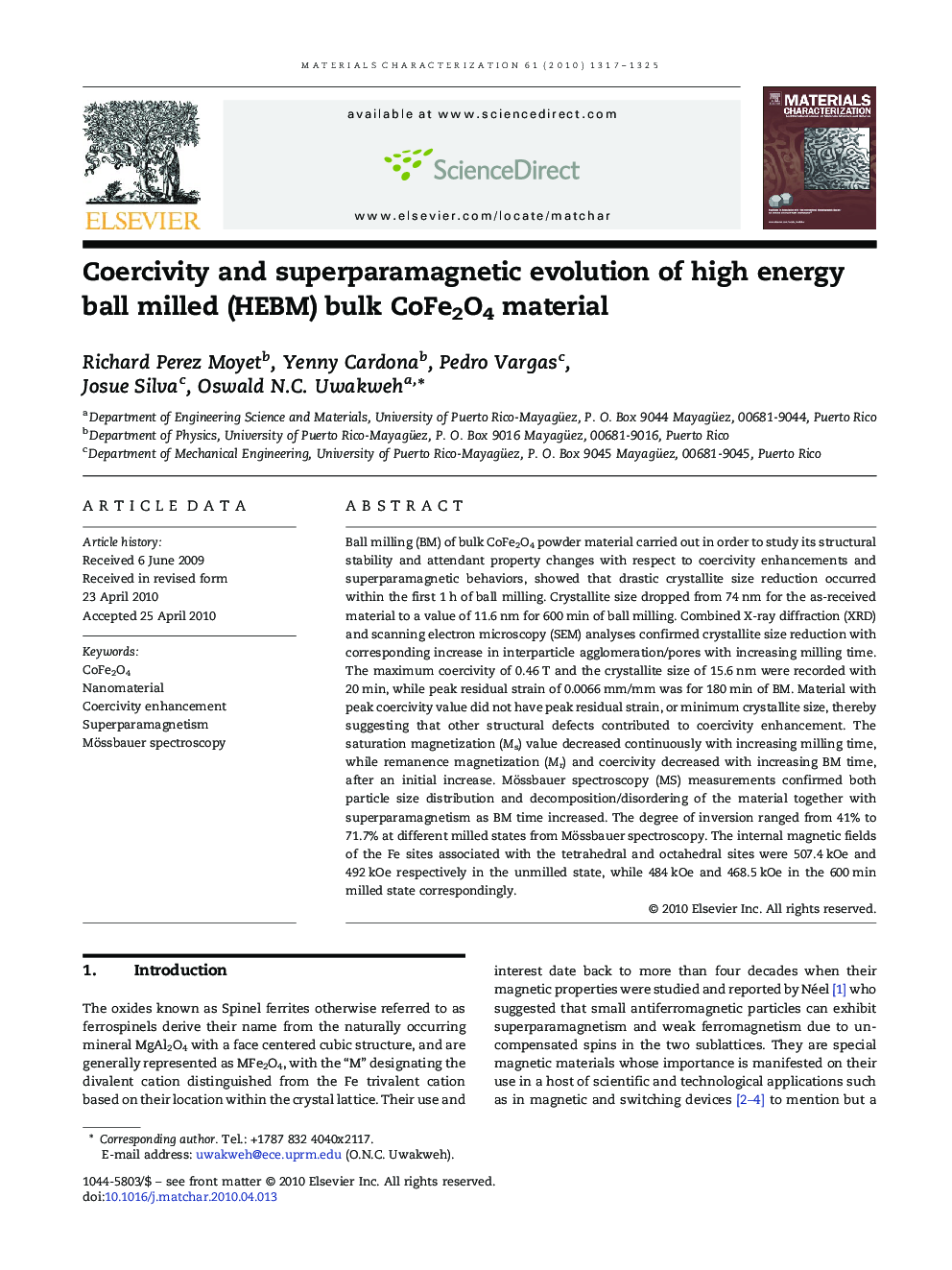| Article ID | Journal | Published Year | Pages | File Type |
|---|---|---|---|---|
| 1571984 | Materials Characterization | 2010 | 9 Pages |
Abstract
Ball milling (BM) of bulk CoFe2O4 powder material carried out in order to study its structural stability and attendant property changes with respect to coercivity enhancements and superparamagnetic behaviors, showed that drastic crystallite size reduction occurred within the first 1Â h of ball milling. Crystallite size dropped from 74Â nm for the as-received material to a value of 11.6Â nm for 600Â min of ball milling. Combined X-ray diffraction (XRD) and scanning electron microscopy (SEM) analyses confirmed crystallite size reduction with corresponding increase in interparticle agglomeration/pores with increasing milling time. The maximum coercivity of 0.46Â T and the crystallite size of 15.6Â nm were recorded with 20Â min, while peak residual strain of 0.0066Â mm/mm was for 180Â min of BM. Material with peak coercivity value did not have peak residual strain, or minimum crystallite size, thereby suggesting that other structural defects contributed to coercivity enhancement. The saturation magnetization (Ms) value decreased continuously with increasing milling time, while remanence magnetization (Mr) and coercivity decreased with increasing BM time, after an initial increase. Mössbauer spectroscopy (MS) measurements confirmed both particle size distribution and decomposition/disordering of the material together with superparamagnetism as BM time increased. The degree of inversion ranged from 41% to 71.7% at different milled states from Mössbauer spectroscopy. The internal magnetic fields of the Fe sites associated with the tetrahedral and octahedral sites were 507.4Â kOe and 492Â kOe respectively in the unmilled state, while 484Â kOe and 468.5Â kOe in the 600Â min milled state correspondingly.
Related Topics
Physical Sciences and Engineering
Materials Science
Materials Science (General)
Authors
Richard Perez Moyet, Yenny Cardona, Pedro Vargas, Josue Silva, Oswald N.C. Uwakweh,
